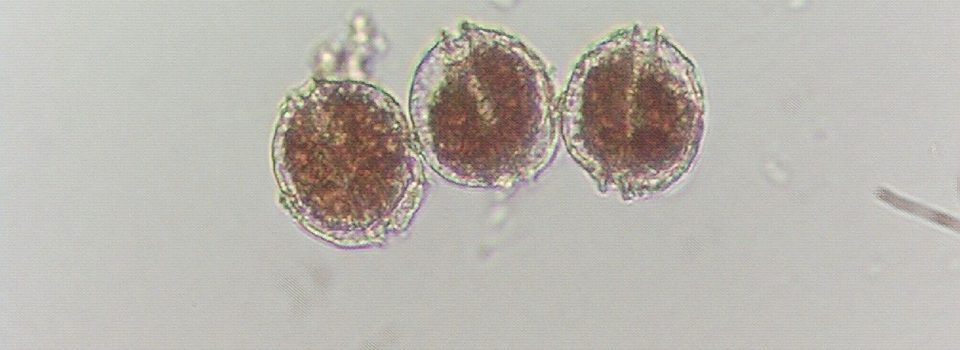IFOP researchers expose at international workshop on harmful algal bloom
August 24th, 2016
Alexandrium catenella
The central subject of the workshop was red tide and climate change
On Wednesday 10 and Thursday 11, at Cumbres Hotel of Puerto Varas, researchers of Instituto de Fomento Pesquero (IFOP), Dr. Oscar Espinoza and Ximena González Vivanco, participated in the workshop on harmful algal blooms organized by the Instituto Tecnológico del Salmón (Intesal) of SalmonChile. The central topic of the workshop was the red tide and climate change. National and international experts in harmful algal blooms attended to the workshop: Jack Rensel (Aquatic Sciences), Donald M. Anderson (WHOI), Gustaaf Hallegraeff (University of Tasmania), Sonya T. Dyhrman and Ajit Subramanian (Columbia University) and others.
Ximena Vivanco, researcher of IFOP presented Phytoplankton and Marine Toxins monitoring in southern Chile on behalf of Mr. Leonardo Guzman, and she pointed out that “a general overview was shown on the monitoring program of harmful marine microalgae and toxins in seafood.”
Some results of this program related to FAN events of Alexandrium catenella and its associated toxin, the Paralyzing Shellfish Poison (VPM, according its acronym in Spanish), were presented, especially the events of 2009 and 2016.”
Dr. Oscar Espinoza González presented the work Displaying the distribution and abundance of Alexandrium catenella in the fjords and channels of southern Chile. He told us that “toxic din flagellate Alexandrium Catenella blooms are recurrent annually at fjords and channels of Aysen region, in southern Chile. This specie has colonized through twenty years from south to north (55 ° to 43 ° S) system fjords and pose a problem for public health and the economy of the region.
One of the hypothesis to explain the settlement and development in this area, is that the blooms are transported by currents as they grow, and then the physical aggregation and vertical migration of A. catenella appear to be the mechanism that promotes formation of red tide. To test this hypothesis, a physical / biological coupled model and observations were utilized to investigate the distribution and cellular abundance at Puyuhuapi fjord in Aysen region.
Our study was carried out in 4 steps. First of all, a conceptual model was generated of A. catenella growth in relation to biological and physical processes. Secondly, from laboratory experiments (growth rates, mortality, grazing) and literature data, a biological model was created for the life cycle of A. catenella. Thirdly, the biological model was combined with a hydrodynamic model, in order to represent the spatial distribution of cell concentration by using data of study period, from 2006 to 2014. Fourthly, the model must be validated by comparing model predictions and available data for the study period 2015- 2016.
Preliminary results indicate that the model is able to reproduce the distribution and abundance of A. catenella, it tends to exaggerate the number of cells observed during a bloom. And finally, the future work is to examine the effect of different biological / chemical processes on physiological responses of A. catenella.
